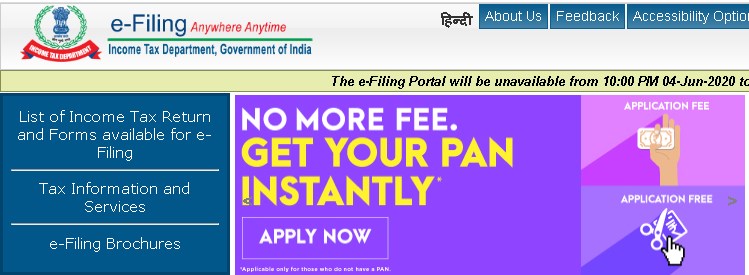The Finance Minister Nirmala Sitharaman has extended the due date of filing the Income-tax returns has from July 31 to November 30. Therefore, the taxpayers got four months’ additional time to file returns for 2019-20.
Now, the Central Board of Direct Taxes (CBDT) has notified the new Income tax return forms for the financial year 2019-20 (Assessment year 2020-21) with several changes.

The income tax department has notified the ITR forms twice, once in January 2020; they have notified two ITR forms i.e., ITR -1 and ITR-4. Now, it has notified all ITR forms (Sahaj (ITR-1), Form ITR-2, Form ITR-3, Form Sugam (ITR-4), Form ITR-5, Form ITR-6, and Form ITR-7). Therefore, it should be noted that the now previously notified forms had been replaced with the new forms.
Key changes made in the newly notified ITR forms:
1. In ITR-1, Government employees have been bifurcated in State, Central Government, and a new type as “NA” added to the list.
2. If you are receiving the taxable income as dividend from domestic companies, you are not eligible to file ITR-1 form.
3. Further, you have to reveal the following information
- Whether you have deposited more than Rs 1 crore in the account,
- Whether you have spent more than Rs 2 lakh on foreign travel,
- Whether your electricity expenses is more than Rs 1 lakh and
- A new “Schedule DA” is to be filled for amount investment/ deposited/ payment made during the period from 01.04.2020 to 30.06.2020.
Due to COVID-19, the government has permitted the taxpayers to make certain tax-saving investments for FY 2019-20 till June 30, 2020. Therefore, if you have made tax-saver investments eligible for deduction under sections 80C, 80D, 80E, and so on or donations under section 80G, between April 1 and June 30, you will have to share the details.
4. Those with joint ownership of house property cannot file ITR-1 or ITR-4.
5. The new forms allow taxpayers to select more than one bank account for receiving tax refunds.
6. In ITR-4, PAN number is optional to fill if the Aadhaar number is provided
7. In section 44AD, one new clause has been added as the electronic mode in addition to electronic clearance and reduced the presumptive income from 8% to 6%.
8. In section 44AE (presumptive income from goods carriages), the celling of maximum row is removed, and a new validation “Number of vehicles should not exceed 10 vehicles at any time during the year.
Details of new ITR forms:
| ITR Forms | Applicability |
| ITR 1 Sahaj | Resident Individuals (other than not ordinarily resident) having total income upto Rs 50 lakh, having income from salaries, one house property, other sources (Interest, etc.), and agricultural income up to Rs 5000 is eligible to file ITR-1. It cannot be filed by an individual who is either a director in a company or has invested in unlisted equity shares. |
| ITR 2 | Individuals and HUFs not having income from profits and gains of business or profession can file ITR-2. |
| ITR 3 | For individuals and HUFs having income from profits and gains of business or profession. |
| ITR 4 Sugam | For individuals, HUFs and Firms (other than LLP) being a resident having a total income upto Rs 50 lakh and having income from business and profession, which is computed under sections 44AD, 44ADA or 44AE. |
| ITR 5 | For persons other than (i) individual, (ii) HUF, (iii) company, and (iv) person filing Form ITR-7. |
| ITR 6 | For Companies except the companies claiming exemption under section 11. |
| ITR 7 | For persons including companies required to furnish return under sections 139(4A) or 139(4B) or 139(4C) or 139(4D) only. |